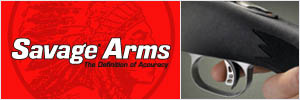


How to Blow Up a Savage 10ML-II
Randy Wakeman
Everyone loves a good train wreck or a plane crash. This is one of the unfortunate propensities of human nature. One of the top new stories of 2009 was the death of Michael Jackson. A better question might be why he didn't pass away in 2008? The strange, the unusual, the bizarre has always held a goodly population of the United States spellbound. Whether Britney Spears, Tiger Woods, or the O.J. trial Americans are held in bewildering fascination with things that couldn't possibly be relevant to them, yet there are deemed “newsworthy” nevertheless. Say something nice in a crowded room, nobody hears it. Say something not so nice, everyone hears it, tells their friends, and it is likely on YouTube the next day as well. Don Henley, founding member of the Eagles, commented on this phenom in the lyrics to his tune, “Dirty Laundry."
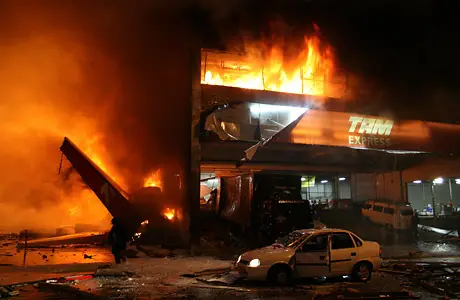
We
got the bubble-headed-bleach-blonde who
Comes on at five
She can tell you bout the plane crash with a gleam
In her eye
Its interesting when people die-
Give us dirty laundry

Let's move on to the subject of conventional firearms, in this case the smokeless muzzleloader from Savage Arms. Laymen have no intimate details on firearms design, firearms testing, or how firearms work, nor should they be expected to. As a result, it is easy to be influenced by the most inane and ridiculous of notions. The most flagrant buffoon of them all uses the initials, “Toby Bridges.” Clueless, untrained, uneducated people shouldn't be attempting to write about firearms design or function. Yes, that means Toby Bridges. It is also fundamental to very basic journalism to state your background and credentials when it has the clear potential to affect your objectivity. There is nothing wrong with candidness and honesty where I come from.
This is where some of the very serious problems start, with flagrant conflicts of interest. Mr. Bridges often likes to refer to his years in the position of “management” at Knight Rifles as part of his "credentials." That might work to the uninformed, but not if you know Tony Knight. I suppose you call this "credentials" if you want, but just not honest or good ones.
Tony Knight is a friend of mine and he has done more than any other single individual to promote muzzleloading. Mr. Bridges was never “management” at Knight Rifles, he was customer relations. Knight Rifles had no choice but to fire him after he was caught poaching (Federal charges, violating the Lacey Act). It was at that time that Knight Rifles discovered that Mr. Bridges had no driver's license for some time, yet had been driving around in a Knight Rifles vehicle with Knight customers for some time, according to Tony Knight.
Mr. Bridges (and his son) was renting a house from Tony Knight and thoroughly trashed the place, according to multiple sources. There was a plumbing problem and rather than fix it or call anyone, including Tony Knight, the water just ran and ran causing structural damage leaving behind a sizeable water bill to boot. When Mr. Bridges was forced to flee the area, he managed to apparently make off with several thousands of dollars of furniture and other possessions as well. However, Knight Rifles was able to reclaim one gun cabinet from the Knight household.
We are all entitled to our own opinions, of course, but we aren't entitled to our own set of facts. The illustrious career of Mr. Bridges as part of "Knight Rifles Management Team" was nonexistent. The facts show that Mr. Bridges association with Knight Rifles, while perhaps remarkable, or at least remarkably disturbing, should cause most anyone to question Mr. Bridges credibility, particularly when he attempts to attack the credibility of others.
Mr. Bridges did manage to destroy a Savage 10ML-II. However, what Mr. Bridges has failed to say is that he had no issue with the Savage 10ML-II at the time, and didn't bother to “warn” anyone of any problems with the gun before or after that time. That includes me and that includes the original patent holder of the gun, Henry Ball. Oh, yes, I know Toby Bridges, certainly not to the extent that Tony Knight and Henry Ball know him, but you bet-- I know Toby.
Mr. Bridges cannot help but brag that from 1997 - 2004, he put "right at 45,000 smokeless powder rounds" though Henry Ball custom guns initially, with the bulk going through production Savage 10ML rifles. Whether you believe that or not (maybe Knight unintentionally "donated" 45,000 bullets and sabots?) Mr. Bridges failed to report any problems, or theories of problems to Savage Arms, Henry Ball, or anyone else for that matter.
The public record paints an entirely different picture of Mr. Bridges. Rather than expressing any concern about safety whatsoever, Mr. Bridges used and promoted the use of ridiculous, random loads (mixing powders, duplex loads, reverse duplex loads) loading practices that are exceedingly dangerous and loudly, universally prohibited by Savage Arms, all powder manufacturers, and all reloading manuals. Recommending the use of a "reverse duplex" load is hardly the actions of any knowledgeable firearms professional, much less anyone that has any legitimate concern about safety. Yet, telling people to mix powders forming random, unproved, potentially disastrous loads is precisely what Toby Bridges did.
I've met with Hartmut Broemel who is widely regarded as one of the top interior ballisticians in the world. This is exactly what Herr Broemel has to say about mixing powders:
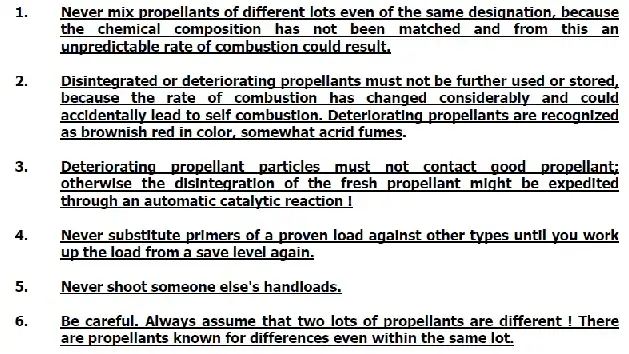
To recommend to consumers that they mix powders shows both incredible ignorance and a disregard for consumer safety as far as I'm concerned. You don't ever mix lot numbers of the same propellants, much less different propellants. This is a settled matter of small arms interior ballistics. Both my friends Johan Loubser of Western Powders, himself regarded by his peers as one of the top two or three professional ballisticians in the world and Dr. Ken Oehler of Oehler Research (who I've also discussed the matter with) heartily agree. No one with any knowledge of small arms would suggest, much less recommend such a thing. Yet, that is exactly what Mr. Bridges published and suggested to others. Mixing powders is simply unacceptable in handloading which is of course what muzzleloading is.
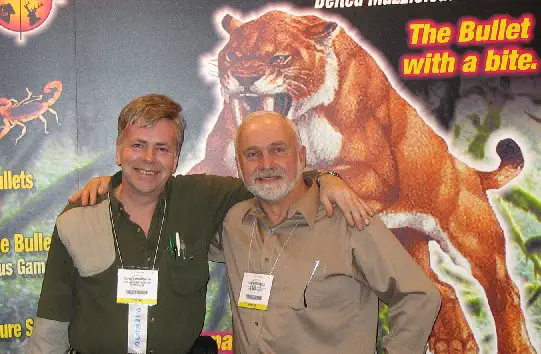
You might be surprised to hear me say this, but Toby Bridges is a likable fellow. Toby's quick with a joke and can swap low-end hunting stories with the best of them. He's also a good writer when he wants to be and would be far more respected today than he is if he spent less time trying to invent his resume, telling tall tales, and having been both associated with (and fired by) more companies in the industry than I can name. Knight Rifles fired him, Henry Ball fired him, and Savage Arms fired him. He was, at one time, sponsored by Hornady Bullets, Barnes Bullets, and MMP sabots. All three have ended their relationships with Mr. Bridges and Mr. Bridges hasn't had much good to say about any of these three companies since. Surprised?
Now we get into the relevant area that Mr. Bridges has always failed to mention with his so-called “objective” reporting of the Savage 10ML-II. Yes, Savage Arms fired Toby from his minor consulting role, Savage C.E.O. Ron Coburn can verify that. Mr. Bridges apparently didn't like the idea of being canned by both Savage Arms and Henry Ball. What followed is amazing, even to me. Toby Bridges faxed and e-mailed an extortion letter to Savage Arms and Henry Ball, demanding quick payment of a large sum of money or he would “destroy smokeless muzzleloading.” I wouldn't have believed it if Henry Ball hadn't sent me a copy of the extortion letter to read with my own eyes, which I did. This may sound just unbelievable, but here is Toby's own cover sheet:
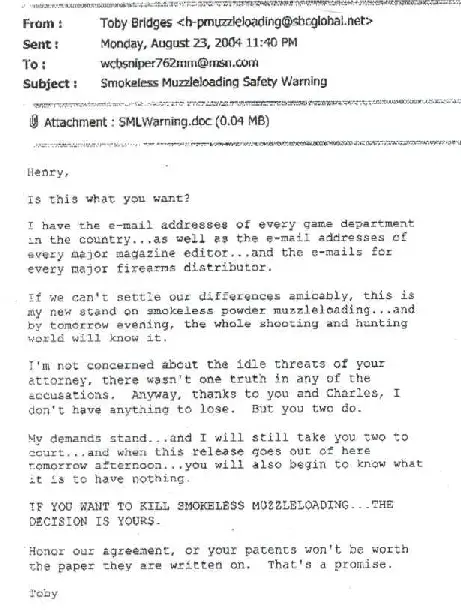
You'll note that Toby refers to his "new stand" on smokeless muzzleloading, a "new stand" based not on any data or actual concern . . . except for the concern of trying to shake down Henry Ball for some instant cash, or his new stand and bogus press release goes out "tomorrow afternoon" with the further threat that Henry's patents "won't be worth the paper they are written on. That's a promise."
Naturally, Savage Arms, that has been making smokeless firearms (and nothing but) for 110 years is hardly going to bother with whacky extortion attempts. Mr. Bridges got goose eggs, but now all of a sudden the mysteriously destroyed Savage from four or five months earlier appeared on his website, with “warnings” that had escaped this self-proclaimed expert for many years prior. Now, really folks, if you are going to try to legitimately “warn” people about something, isn't it just a wee bit dishonest to fail to mention that what you are now “WARNING” the unwashed masses about is a product from the company that just fired you and that you just tried to extort money from?
Tony Knight called me and told me that although he wasn't there, he felt Toby Bridges was quite capable of staging a blow-up. Henry Ball called me and told me the same. I wasn't there, so I don't know either way. Ever since August 23, 2004, Toby Bridges has been desperately attempting to discredit Savage Arms solely because he got canned, and his attempts at blackmail failed. It is Toby's own words that condemn his actions far beyond the power of anyone else to do so.
There are a lot of things I do know quite well, however, from many years of industrial engineering training, personal experience, and decades of study, listening, learning from truly accredited professionals in metallurgy,mechanical engineering, interior ballistics, firearms manufacture, firearms design, and laboratory analysis. I'm going to run down a list of a few of them for you right now.
A) The “Gas-Cutting” Breechplug Theory
This newly coined term does not bear close scrutiny. Throat erosion is common in all rifles and is a known quantity that has been around for as long as I can remember. The gas temperature of propellant is somewhere around 5000 degrees F. Whenever you burn a lot of powder in a small hole, as in the .220 Swift, the .22-250, and the .204 Ruger you have the potential for “barrel burners.” Throat erosion begins at the chamber area and migrates towards the muzzle. It never has been a safety issue at all. The rifling depth on most center-fire rifles is only 3.5 thousandths of an inch or so, about the depth of a piece of newsprint. It doesn't take much to erode the rifling to the point where it affects accuracy. Not a safety issue at all, but if you get a .220 Swift barrel nice and hot and keep blazing away the accuracy life of that barrel is diminished considerably. It is not unusual at all for high-volume varmint shooters to wear out their barrels within 3000 – 5000 rounds and screw on a replacement barrels to get accuracy back. This is considered common knowledge.
All flash holes and breechplugs erode. This too is considered common knowledge and normal wear. As Dr. Gary “Doc” White has long noted, most muzzleloaders don't shoot nearly enough to notice. The breechplug is a wearing part. Not a safety issue at all, but particularly when the flash hole opens up it may become an accuracy issue. That's the whole idea behind the original Henry Ball patent-- flash holes wear, regardless of propellant. With the patented ventliner (a replaceable flash hole) you get brand new muzzleloader accuracy without having to change the whole breechplug, just the ventliner. The idea that “gas-cutting” is new, unusual, or unique to the Savage is false on its face. I've personally shot Thompson and Knight breechplugs to the point of being so visibly eroded and opened up, the worn-out breechplugs had to be replaced. Shoot any breechplug long and hard enough, it can show wear. All normal wear, with the opening of the flash hole the part that may affect pinpoint accuracy.
B) The Breechplug as a “Perfect Seal” Theory
This one is easily disproved. No breechplug seals “perfectly.” If they did, no muzzleloading manufacturer would bother telling you to lube the breechplug threads. They all do, of course, as the threads do most of the sealing. But, the threads do not at all make a breechplug a “perfect seal.” A perfectly sealing breechplug would be completely worthless. Look at any breechplug-- of course it isn't a “perfect seal,” as there is a nice hole going straight through the middle of it. If there was no flash hole, your primer would not be able to do its job. For anyone so inclined to think a breechplug is a “perfect seal,” you might want to install one in the middle of your bass boat-- and don't be all that surprised when it eventually fills with water and sinks. So much for “perfect sealing breechplugs.”
C) Fully Threaded Breechplugs Are Desirable?
The unthreaded nose on a breechplug is the better, stronger breechplug-- not the other way around. It is the nose of the breechplug that is in direct contact with the hot gas, not the threads that are behind it. The unthreaded nose of the breechplug protects the breechplug threads, having threads in direct contact with the primary powder charge exposes them to hot gas and particulate matter. And what about barrel strength? Cutting threads into a barrel of course weakens it at that point, which is exactly what you would have to do with a fully threaded breechplug.
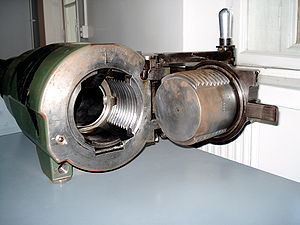
This is the breech from a Russian 122 mm M1910 howitzer combined with 105mm H37 howitzer barrel. The Howitzer breechplug is as far from "fully threaded" as can be imagined.
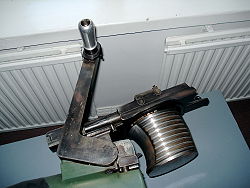
This is the overhead view of the same Howitzer. As the Howitzer is a breechloader, not a muzzleloader, you'll note the huge, smooth, threadless concave area required so the breechplug can be swung in and out of battery.
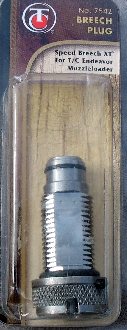
Most modern inline breechplugs have unthreaded portions at the nose area, for the simple reason that they are better-- doing a good job at protecting the breechplug threads than running threads all the way to the nose. The above image is a picture of my spare Encore Endeavor breechplug, the "Speed Breech XT." While the idea of being in a hurry to get your breechplug out may make some sense with heavy fouling, corrosive propellants, it makes a lot less sense with far cleaner, non-corrosive smokeless. The interrupted threads of this T/C plug were inspired by the Howitzer. You'll note that more than half of the breechplug has no threads at all and the stepped snout is completely threadless.
A breechplug, with a smooth unthreaded portion at the nose is a superior design. It protects the threads of the breechplug and is also stronger than a fully threaded plug by having superior column strength and lack of stress risers. It was co-designed by both Savage Arms and Henry Ball and is used simply because it is superior in both respects. As a matter of fact, I discussed this breech plug with both Henry and Ron Coburn. The initial design had passed testing, but Henry wanted an extra turn of the strong, coarse threads added to what by now has long been the standard Savage breech plug. Ron Coburn, a firearms designer and multiple patent holder in his own right, asked Henry why, as it already exceeded all recognized engineering standards. Henry replied, "Because everything about this gun has to be the best that has ever been. I always err on the side of caution and safety." Ron Coburn smiled, complimenting Henry on the way he looked at things. "It will be the best that has ever been, Henry. We are raising the bar on standards in the industry." That extra turn of threads was added without delay.
D) How Pressure Works In a Muzzleloader
This is important and not commonly understood. The complete bullet travel time of a saboted projectile in a Savage 10ML-II is very, very short-- less than 1.5 milliseconds. It takes 300 – 400 ms for the average human to blink an eye. Let's say you are a fairly fast eye-blinker at 300 milliseconds. In that period of time, 200 shots could have traveled the full length of a Savage 10ML-II barrel and exited.
What does this have to do with pressure? Quite a lot, actually. Peak pressure in a muzzleloader happens nowhere near the breechplug at all, it always follows the base of the sabot. Peak pressure in a representative load of Accurate Arms 5744 happens after the length of the powder column, and after the sabot has moved 2.5 inches. It is absolutely, positively nowhere near the breechplug at all. Of course, the sabot doesn't stop there-- it continues to move, rapidly exiting the muzzle about one millisecond later. After the peak pressure node, the pressure rapidly drops. The breechplug of a Savage 10ML-II sees no significant pressure, nothing remotely approaching peak pressure.
Again, I'll call upon Hartmut Broemel, designer of "QuickLOAD" and "QuickDESIGN" ballistics analysis software for his description of pressure distribution.
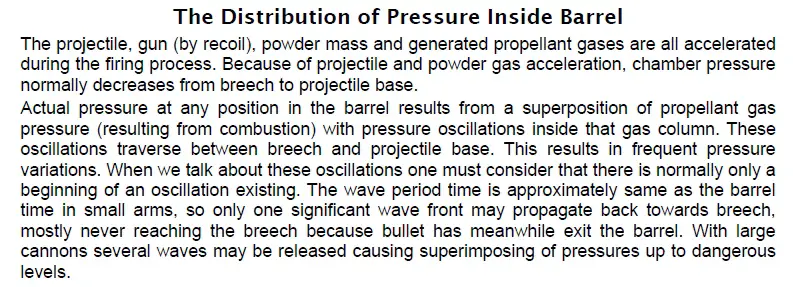
If you give this a little thought, it will quickly become obvious to you. If the entire barrel was ever pressurized at a constant level, after every single shot that little cheap, tin-can of a 209 primer would be shattered into bits or quickly flattened like a bug on a windshield. It doesn't happen in the Savage, nor does it happen in any muzzleloader of course. Peak pressure never reaches the breechplug at all, not even enough to destroy a chintzy 209 primer. No Savage breechplug has ever failed despite Savage's intense, destructive testing of the 10ML before the first one was ever sold. It cannot plausibly fail as it sees no significant pressure as compared to the base of the sabot far downstream.
How Do I Blow Up a Savage 10ML-II?
Well, I didn't tell you it was going to be easy. If you are a reasonable person and use Savage-recommended loads, you're just out of luck. You cannot possibly damage your Savage 10ML-II, much less destroy it. Savage-recommended propellants, charge weights, and allowed weights of saboted bullets simply do not make enough pressure to come remotely close to damaging a Savage 10ML-II. That's been the idea all along, for the last ten years of continuous 10ML production. The laws of physics prevent that.
However, any steel tube can be destroyed if you try hard enough, including Howitzers and heavy Naval guns-- they all have been. There are two basic strength values to steel; 2% yield strength and tensile strength. If you really want to destroy a Savage 10ML-II, you are going to have to find a way to exceed the tensile strength of the Savage's proof-tested, certified steel barrel. Tensile strength is the pressure at which steel pulls itself apart. Please bear with me, I'll try to get you there.
For starters, you might want to try a double charge of powder-- a dangerous, Savage prohibited load. So, a double-charge of powder and a 250 grain saboted bullet might put your shoulder out of joint, or bounce a scope off your head in a belated attempt to talk you out of it. You won't be able to hit anything, of course, as the integrity of your sabot is long gone. It is a dumb thing to do, but will develop a peak pressure in the area of 60,000 PSI-- not enough to destroy your Savage. By the way, this is not a load “recommendation,” folks. Neither is shooting out your ramrod, but dozens of people have done that and managed to ring a Savage barrel, but not destroy it.
Okay, so let's try something else, thrill-seekers. How about a Savage “max charge” of powder, then a 250 grain sabot, then another 250 grain sabot. Well, your shoulder is out of its socket again and that pesky scope is likely bouncing off your head once again, but no-- the peak pressure you developed is once again in the general vicinity of 60,000 PSI and it is unlikely you damaged your gun.
It is redundant testing like these loads (and more radical ones) that Savage has conducted for years (along with independent folks like Barnes Bullets, Western Powders, etc.) that makes damage to the 10ML-II with a Savage-recommended load a practical impossibility. It also exposes Mr. Toby Bridges as a horrible, lousy liar who is also supremely technically incompetent. Though attempted extortionist Bridges' completely unsubstantiated story about his incident from nearly six years ago has changed constantly, the original claim was that he was using 44 grains of Accurate Arms 5744 and a 250 grain Hornady SST. Problem is, 44 grains of AA 5744 just cannot physically make enough gas with a 250 grain SST to possibly damage a 10ML-II. The “Toby Rifle” was examined by several experts and the universal conclusion was there was no problem with the metallurgy at all-- it was a simple, classic, horribly severe over-pressure situation not possible with any Savage load.
For the last several years, Mr. Bridges has been begging one and all to send him pictures of a failed Savage, ostensibly still because he is still stinging from his discharge under "less than honorable conditions" from Savage Arms. After all these years, Toby apparently finely got his wish. A fellow from Canada sent Toby pictures of a rifle that he allegedly blew-up and further claimed that he was using 42.5 grains of SR-4759 and a 250 grain Barnes. All of this is more than a bit odd, as we don't have any witnesses, no sworn statement, no corroboration, no professional investigation of the incident, and no proper examination of the rifle-- or any examination of the rifle at all for that matter. Of course, Mr. Bridges personally knows nothing of the incident at all; he just got some Don Henley “Dirty Laundry” to pollute his site with.
There is a very big problem here, for anyone that knows anything about internal ballistics, though. 42.5 grains of SR4759 and a 250 grain Barnes sabot cannot damage a Savage 10ML-II. A quantity of 42.5 grains of SR4759 and a 250 grain sabot can't possibly make enough pressure in a half inch hole to do any damage. Puzzled by all this, I called Savage and was surprised to learn that they have never heard from this fellow, or anyone connected with this fellow. It makes no sense.
The Grand Finale
After all this, I feel I owe my readers a bit of an apology for going on in such detail. I think it is important, though, to get a full and complete picture of what is plausible and what is not. The theoretical problems covered so far are not at all plausible. I received a voice mail from a gentleman by the name of Bob Stevens, a Savage 10ML-II fan from Idaho. Naturally, I promptly returned the call. Bob had just blown up his Savage 10ML-II.
Bob is 75 years old, an experienced hunter and reloader. He fell in love with his Savage 10ML-II and had had great success with it in the field. Yes, Bob blew up his Savage 10ML-II. Bob was uninjured, but the rifle sounds like quite a mess. A big difference here. While Bob was completely uninjured (except for his pride), Bob Stevens knew exactly what happened.
Bob's load was 43 grains of SR4759 and a 250 grain SST. Bob loaded his Savage 10ML-II, intending to do a little target shooting, but the wind was so bad he thought the better of it. He knew that there is never an excuse for storing a loaded muzzleloader, but I guess at the time he figured one night wouldn't hurt. Bob also knows what every muzzleloader should know, that being that the use of a witness mark on the ramrod absolutely, positively, mechanically prohibits any double loading or bench errors.
The next day the wind had diminished. Happy at the prospect of being able to go out and shoot, Bob grabbed his trusty 10ML-II and headed out forgetting that he had already loaded it. Bob knows that confirming that a Savage 10ML-II is unloaded is quite easy, as all you have to do it drop the factory ramrod into the muzzle and it will end up flush with the muzzle, instantly telling the shooter that the gun is indeed unloaded. But, his mind was on other things so that wasn't done.
By now, you can probably guess what is coming. Bob completely loaded his already completely loaded Savage. Down went another 43 grains of SR4759, down went another 250 grain SST. Sure, Bob had a witness mark but it doesn't do you much good if you don't use it. Bob also didn't notice that his loading rod didn't go down as much as normal, as it was left protruding the additional combined length of the extra powder charge column, the extra sabot, and the extra 250 grain SST. Bob quickly primed the gun and fired, and the gun came apart.
The chocolate layer cake load that Bob constructed consisted of seven components: primer, powder, sabot, bullet, powder, sabot, bullet. You have to break just about every rule in the book to get there, but it happened. Using information from Hartmut Broemel of Babenhausen, Germany, and Johan Loubser of Western Powders, I ran the numbers to get a rough idea of the peak pressure potential of that load that happened 2 milliseconds after Bob hit the Accu-Trigger. The maximum pressure potential of that load exceeds 316,000 PSI, roughly nine times the pressure of any Savage recommended load. That is of course more than ample pressure to destroy any commercially available shoulder-fired weapon I can think of. The SAAMI MAP for the .50 BMG, for example, is 54,000 PSI, with nothing running higher than 65,000 PSI MAP that I can think of.
The failure mode from Bob Stevens' event, Toby Bridges six-year-old event, and the borderline mysterious Canadian event are all strikingly similar. It seems highly likely that the simple use of a ramrod could have prevented all of them, that is assuming that Mr. Bridges' event was one that was actually wished to be prevented.
So, that's all there is. It is just a good idea to never store a muzzleloader loaded and always use a witness mark. Since all muzzleloading is hand-loading, it is up to us to control what goes down the muzzle-- and no one can do it for us.
Copyright 2010 by Randy Wakeman. All Rights Reserved.

Custom Search


